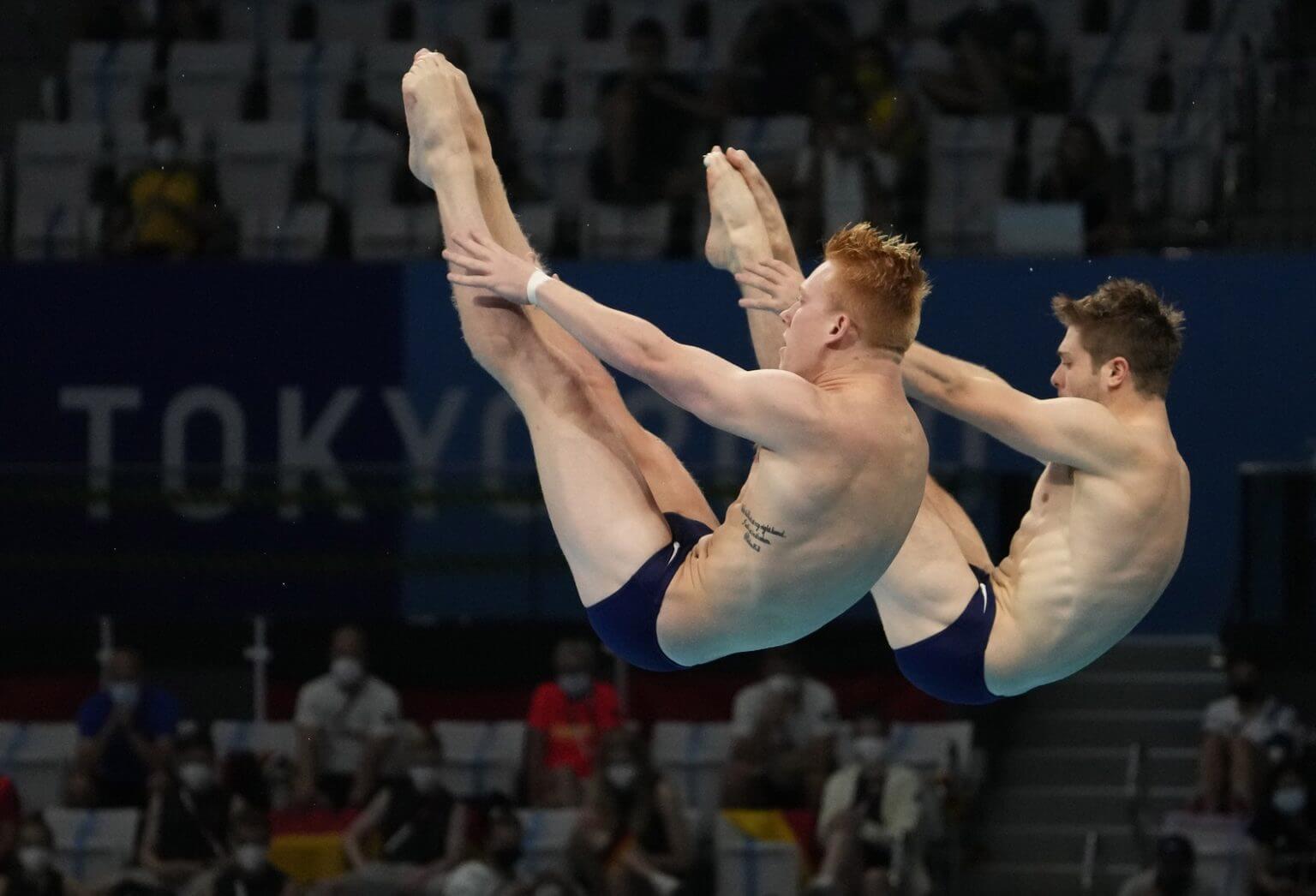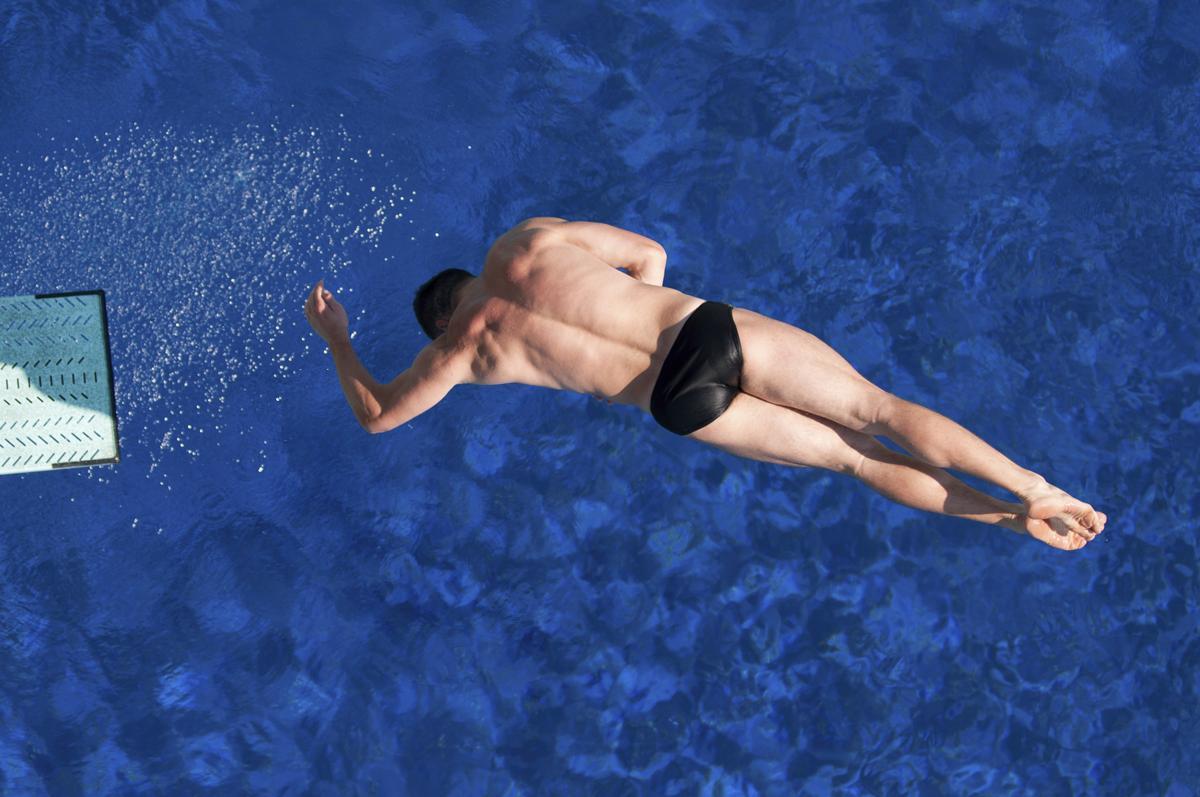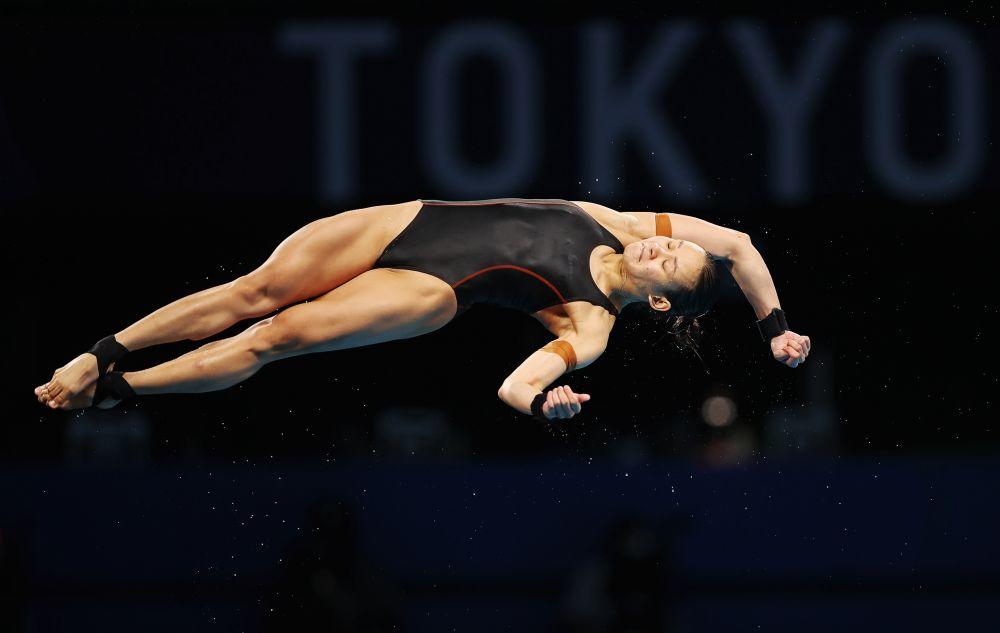"Diving is like poetry in motion." - Philippe Cousteau Jr.
If you have ever watched Olympic diving on TV, you are likely familiar with the feeling of awe at watching athletes perform at the highest level.
To the audience watching, the skilled diver is quick to execute difficult spins and flips yet graceful when entering the water.
To the diver, they must remember the disciplines they have learned in the diving sport and overcome the pressure of others watching so they can perform a near-perfect dive.
Have you ever wondered what it'd be like to be part of this diving sport?
This article is a guide to competitive diving: why it is popular, what to expect when you enter this diving sport, and what options you have for learning to dive.

Why is diving sport interesting?
Free diving, scuba diving, underwater diving... these are all types of diving!
Let's look at the type of diving that is Olympic diving in detail.
From this diving sport perspective, diving can be defined as the sport of plunging into water. It is usually the person's head which enters the water first, followed by the rest of the body. The addition of gymnastics and aerobatic stunts, as seen in springboard diving, originated in Europe sometime in the early 1800s.
When did diving become a competitive sport?
With more and more people spectating the act of others diving and performing seemingly impossible tricks in the air, it eventually emerged as a competitive sport in the late 1800s: diving enthusiasts were actively trying to out-dive each other! Then, in 1904, the diving sport was included in the swimming programme of the Olympic games.
Since then, Olympic diving has grown to include various groups and categories, such as synchronised diving which was introduced in the year 2000. Today, audiences still enjoy watching diving in person and on television, and it remains a popular sport among up-and-coming athletes and enthusiasts.
Did you know that Malaysia has also made its name in the Olympic diving history books?

What are the different Olympic diving styles?
In the diving sport, you may have seen athletes perform different styles of diving on a high platform or off of various springboard heights.
The Olympic diving styles or types are categorised into groups based on the starting position of the diver and the direction in which they are performing their dive. Here are the six groups of Olympic diving that showcase various diving styles:
- Group 1 - Forward: The diver faces the front of the board and rotates forward toward the water. The diving styles in this group vary from the straightforward front dive to advanced dives that involve somersaults.
- Group 2 - Backward: The diver stands at the end of the board with their back facing the water. They will rotate backwards, away from the board.
- Group 3 - Reverse: Like the forward group, the diver faces the front of the board, but they will rotate towards the board.
- Group 4 - Inward: Like the backward group, the diver stands at the end of the board, facing their back to the water. However, they will rotate forwards, towards the board.
- Group 5 - Twisting: This group includes any dives performed with a twist, regardless of the starting position and direction of the dive.
- Group 6 - Armstand: The diver takes a handstand position on the platform's edge before diving. Hence, this group includes only dives performed on the platform, not the springboard.
Isn't it interesting how diving sport athletes can perform various acrobatic stunts in the air and still enter the water with grace? This interesting video explains how Olympic divers make the tiniest splash!
The disciplines of Olympic diving ensure that athletes stay safe while performing these unique diving styles and maintain the highest level of integrity while participating in the diving sport. More on diving competitive rules and regulations here.


Is diving sport expensive?
Of course, nothing as amazing as diving will come at zero cost.
There's more to starting diving than just putting on a swimsuit and taking off from a springboard. You need to be prepared for the costs of taking up the diving sport if you want to get into it professionally! If you want to start springboard diving and other forms of competitive diving, consider these areas where you will need to set aside some money:
- Swimming attire, including special, form-fitting suits and wrist guards
- Diving courses, like the cost of learning with a diving instructor
- Medical fees, in the case of dive-related injuries
- Travel fees and other expenses to ensure you can continually progress in diving
Since diving is not a readily accessible sport compared to sports like football and badminton, you should know that it is not cheap to sign up for diving lessons and purchase diver-specific attire. You also have to prepare yourself for the pressure of performing well since competitive diving comes down to the judges' scores and how well you have trained in the diving sport.
Nonetheless, diving can be absolutely rewarding if you decide to pursue it.
Did you know you don't have to be a perfect swimmer to start diving? You just need basic swimming skills and be able to resurface to the water. So not only can you learn how to swim better by picking up diving - it is a sport open to people of various ages and swimming levels!
Children can be introduced to diving even if they are aged 5 and under, and older folks can enjoy the thrill of diving, too! There are various levels of springboard diving courses so that everyone can learn to dive and enjoy the sport. Additionally, you will build physical and mental strength by picking up diving disciplines.
Look for some places to learn diving in Malaysia.

How do I start learning to dive?
You may still be unsure if you want to commit to a diving class right away.
How about you start learning to dive by educating yourself more about the diving sport?
That would be a great place to begin to try this diving sport.
Use these tips below to learn more about diving and help decide if you want to pick up Olympic diving.
- Engage with diving resources online: You can find many diving videos and explanations on platforms like YouTube, Instagram and Google that will educate you about the sport. Since it is free to read up on diving articles, you don't have to worry about paying for a diving course just yet and get to know more about the sport first.
- Talk to others who are in the sport: Do you know any diving athletes or people in the swimming disciplines? You can ask around to see who could tell you more about diving, or even look for online community platforms like Facebook where people are talking about the latest diving news.
- Learn with a swimming tutor: You can start learning to dive by swimming! This can prepare you for the water and then you can decide if diving is the sport for you. Did you know you can have your first swimming class for free on Superprof?
These famous Malaysian divers are here to inspire you to take up the sport.
Reasons to take up the diving sport with Superprof
After considering the many reasons to learn the diving sport, you may wonder if you are ready to dive before even knowing how to swim properly.
"Do I need to learn swimming before diving?"
You don't need to be the best swimmer in the world if you want to try springboard diving, but having basic water skills is a must for any training related to diving disciplines.
Are you aware that you can progress from swimming to diving with an experienced swimming instructor?
Introducing Superprof, your place to learn swimming with a private tutor near you!
Superprof is an international platform that connects learners to tutors of various subjects, sports and hobbies. Superprof students are happy to take swimming classes with their private tutor on Superprof because:
- They have the chance to learn with professional swimming coaches and instructors who have years of teaching experience.
- They can look for a private swimming tutor near their home and save travel time and costs.
- They can take swimming classes at affordable rates, from as low as RM50 per hour with an experienced swimming instructor.
- They can choose from the various swimming levels available, including beginner, advanced and kids' classes.
- They can take their first swimming class for free!
Are you ready to learn swimming with a Superprof private tutor? Just head to the Superprof Tutors platform and key in "Swimming" as your desired subject. Superprof will lead you to the extensive catalogue of swimming coaches, and you can easily make your choice after reading the various tutors' profiles and seeing who matches your learning needs best.
That's all about swimming and diving!
Discover professional teachers for adult swim classes on Superprof.















